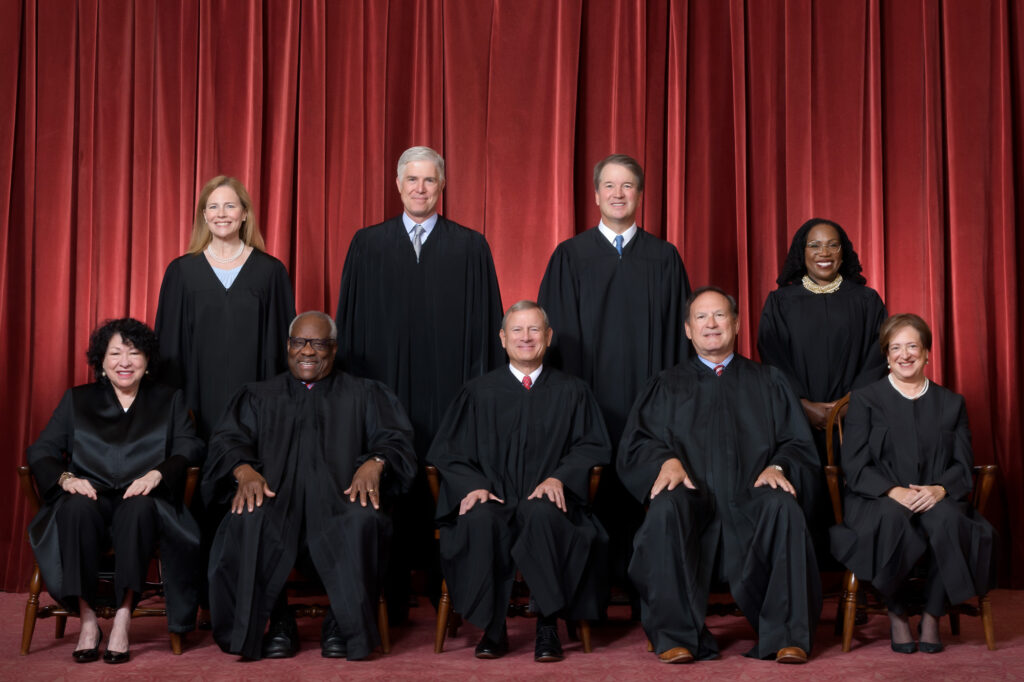Why Are There 9 Supreme Court Justices? A Historical and Constitutional Explanation
The number of justices on the U.S. Supreme Court—nine—is not set by the Constitution, but it has become one of the most recognizable features of the American judicial system. This number is the result of evolving legislation, political compromise, and judicial necessity. Understanding why there are nine justices today requires a look back at early American history, the structure of the federal judiciary, and the changing demands of a growing nation.

The Constitution: Silence on Numbers
The U.S. Constitution, adopted in 1787, establishes the Supreme Court in Article III, Section 1, but it does not specify the number of justices who should sit on the bench. Instead, it grants Congress the authority to determine the structure and size of the federal judiciary. This design provided early lawmakers with the flexibility to shape the court in response to the nation’s needs.
The Judiciary Act of 1789: The Beginning
The first Congress exercised its power through the Judiciary Act of 1789, which created a Supreme Court with six justices, one Chief Justice, and five Associate Justices. The number was chosen in part to match the structure of the federal court system at the time: three judicial circuits, each overseen by two justices “riding circuit” to hear cases across the country.
Fluctuations in Court Size: Politics and Practicality
The number of justices did not remain fixed. Over the 19th century, Congress adjusted the size of the Court several times for both political and administrative reasons:
- 1801: The outgoing Federalist Congress passed a law to reduce the Court to five justices, hoping to limit Thomas Jefferson’s appointments. The act was repealed in 1802.
- 1807: Congress increased the number to seven, reflecting the expansion of the judicial circuits into the growing western states.
- 1837: With the addition of new states and circuits, the Court grew to nine justices.
- 1863: During the Civil War, Congress added a tenth justice to align with another new circuit.
- 1866: To limit President Andrew Johnson’s power, Congress passed a law to reduce the Court to seven members gradually.
- 1869: After political tensions cooled, Congress passed the Judiciary Act of 1869, setting the number of justices at nine, where it has remained ever since.
Why Nine Has Endured
The number nine has proven durable because it strikes a balance between efficiency and deliberation. With an odd number, the Court can avoid deadlocks in decisions. It’s large enough to distribute the workload and allow for diverse judicial perspectives, but small enough to operate effectively as a deliberative body.
Practicality and precedent have also played a role. For more than 150 years, the public, the legal system, and the government have adjusted to a nine-member Court. Over time, this configuration has become an integral part of the Supreme Court’s institutional identity.
Challenges and Debates: Court Packing and Reform
The idea of changing the number of justices has surfaced during moments of political conflict:
- In 1937, President Franklin D. Roosevelt proposed expanding the Court to up to 15 justices after it struck down several New Deal laws. The plan, dubbed “court packing,” was met with widespread resistance and ultimately failed.
- In recent years, debates have reignited regarding the expansion of the Court due to perceived imbalances or politicization. However, any change would require legislation passed by Congress and signed by the President.
Conclusion: Nine Justices by Law, Not by Constitution
There are nine justices on the U.S. Supreme Court today, not because the Constitution mandates it, but because Congress established that number in 1869, and it has remained unchanged since then. The choice reflects a combination of historical circumstances, political decisions, and institutional stability. While an act could legally change the number, the tradition of a nine-member bench has become deeply rooted in American law and culture since the time of Congress.

